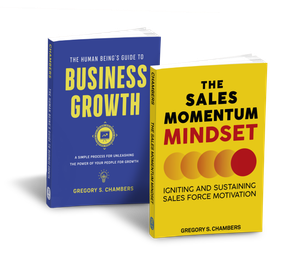3 Chambers Pivot Customer Service Secrets
3 Chambers Pivot Customer Service Secrets

At its core, there are 3 places you can look for new business: new customers, existing customers and inside your customer service efforts. While 2 and 3 sound alike, one is a sales driven effort and the other is a company mindset. I want to give you a peek at 3 of my 6 Customer Service Secrets. The full pamphlet will be up and ready by the end of April for download.
Your customers can be broken down into 4 categories of engagement with you and your organization: they don't think about you, they use you out of habit, they have no idea about how great you are or (the holy grail), they are happy and loyal.
This guide contains 3 of my 6 of Secrets for giving your customer service efforts an edge. It's been used successfully by sales teams, marketing departments, IT teams and of course, customer service departments. These secrets are silo agnostic. They work because they are "actions" that can be taken by anyone in your organization from front line customer service people interacting with your best customers to executives interacting with outside vendors.
You will walk away from this with action that will drive new business development immediately. Swear.
Let's jump right in with the first action along with a little "action" definition because first things first, right? Defining terms is the beginning of wisdom.
1. Secret #1 - Respond right away. There are 4 main categories of action you can take when dealing with a problem. Corrective, Preventative, Adaptive and Contingent. This first secret fits into the Corrective category and serves to get you on the right track and is something you can build a customer service edge with.
To build a customer service edge, respond to inputs/start the conversation with customers immediately. It's #1 on the list because the only way you can respond is if your customer (internal or external) has reached out to you first. Ouch!
In my perfect customer service world, we are actively anticipating the needs of our customers. What has happened, will happen. If they are reaching out to me with an issue/request/comment then I'm behind. That's why this Action is Corrective. The catalyst is occurring in the past and we're trying to get to the cause of why it's happening.
As with all of these actions, this one sounds simple but isn't easy. Any interactions originating from customers requires a quick response, if only to say "I have your note". Here are some examples of quick responses:
email/contact us/general inquiry:
question that can be answered: "Thanks for your recent note. Here is your answer."
question that needs research: "thanks for your recent note. I need to find the answer for you. I'll be back to you in no more than XX hours."
question that can't be answered: "thanks for your recent note. In order to answer your question I need to make sure I understand it better. [clarifying question that puts the misunderstanding on you]"
The general takeaway is this: when your customer has reached out with an unanticipated question, you need to work at directing the conversation. Their inquiry formats are finite like I've listed above. In general they are asking a question you know, one you don't know, one there isn't an obvious answer to. Be prepared and get on top of the interaction.
That starts with taking corrective action and responding right away.
Let's take a look at the next secret.
2. Show understanding without saying "I understand". One of the customer service fixes that flew through call centers in the 80s was the advice to "match and lead" your customers to a resolution which involves making the customer feel like they are being heard.
Somewhere along the line that became "I understand." which may have sounded assuring in some past life but in the hands of a novice sounds trite and unconvincing. I feel this way about all tactics, including the tactics I am throwing at you right here: don't focus on the tactic, focus on the intent.
That being said, there are tactics that due to their sheer overuse have become communication land mines. They don't always go off, but when they do they impede communication rather than enhance it. "I understand" is one of those phrases in the customer service world. If you hear your front line people or it's being bandied about in internal communication, make a change.
The intent is still true and incredibly valuable. In order to communicate effectively, it helps to be on the same page. The beginning of wisdom is the definition of terms, right? Showing understanding and feeling understood is a strong base to communicate from.
What are some alternatives? Try these suggestions:
Short: I get it, I get the idea, I get the picture, I hear you. Longer: Can I restate what you just said? If I'm hearing you correctly you're saying. . . I think we're on the same page, but just to check
Again, what has happened will happen. 5 minutes thinking about alternatives to "I understand" will break most people out of their communication habits and force them back into listening in order to "understand".
3. Take responsibility. The first question that comes to your mind is "take responsibility as a company or take responsibility as an individual?" and it's a great question. The issue with responsibility is rooted in how the organization empowers its customer facing people. The business development people tend to be given a wide berth when it comes to making customer's happy while the back end service team tends to need to go through varying levels of approval before demonstrating responsibility.
Let's address how the customer perceives your efforts at taking responsibility for helping them out. You've heard that actions speak louder than words and it's true. That said, your words are the first input your customer receives. The reason I have Respond Immediately and Show Understanding without saying I Understand is because those two events tied to an action/statement showing "this situation was not our intention and I will work to fix it" responsibility statement is a simple way to show responsibility .
Taking the two extremes of employee decision making above, one with leeway to make their own decisions and one that requires input from management, let's look at how the different approaches might sound.
Empowered employee "I hear you Mary, let me make sure I understand. Your counsel expected a revised T&C but when the contract arrived this morning the changes that our counsel was supposed to have made were not included. I know how expensive counsel is and I can assure you that this wasn't our intent. I will do this to start: contact our counsel, contact our account staff and get back to you with the fix."
Employee that has to work through the chain of command "I hear you Mary, let me make sure I understand because I'll be the one working through our internal process for you. When we sent your last invoice to collections we violated the amended T&C that you had set up in the contracting phase. I am sorry that you have to go through the effort of calling us to fix this - that's not how we want this to work. I am going to do this: contact my supervisor so she can initiate the call to counsel and the call to billing for me. I will be your eyes and ears on the inside and we'll get this taken care of."
Besides thinking "who talks like that?" you can see how the structure of the responses address points 1, 2 and 3, right? Immediate response, demonstrating understanding and taking responsibility. The specific language isn't as important as the structure of the process. The intent is what fuels the process. Your intent.
Those 3 steps encompass the first half of the game. These next 3 steps are the action phase and are what drives your customer service culture. Bringing all 6 of these together are the magic that you're looking for. The process that will enable you to transform your customer service into a competitive advantage.
Sign up for the newsletter to be notified when the full pdf comes out.
Good stuff.
About the Author: Greg Chambers is Chambers Pivot Industries. Get more business development ideas from Greg on Twitter.




